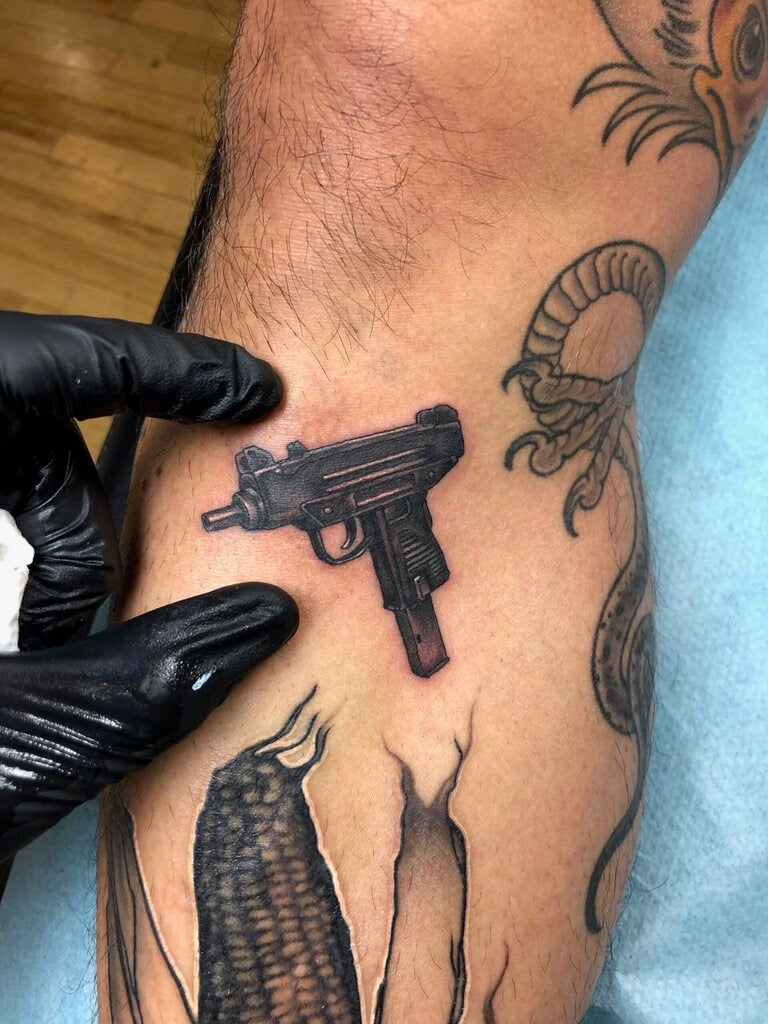
Micro Tattoos Require Specialized Tattoo Artists
Micro tattoos and micro portrait tattoos may be small, but they require a specialized skill set. Many tattoo artists may tell you that they can give you a micro tattoo, but unless they have a portfolio showing examples of successfully executed micro tattoos, they may not be the artist for the job. In this post, I will explore why micro tattoos, micro portrait tattoos, and fine line tattoos require a specialized skill set.
Traditionally speaking, fine line tattoos are done with a single needle; however, with modern advances in technology, I prefer a 3-round liner of the smallest (4) gauge. A regular 3 round liner is a 12 gauge, and they go down in size by even numbers from 12 to 10 to 8 to 6, and the smallest you can get is a 4 gauge. The difference in each one is approximately one millimeter. The 4 gauge mimics a single needle.
I prefer the 3-round liner over a single needle because a single needle more easily slices the skin. With a single needle, there isn't any tooth or grip to adhere to the skin whereas with 3 needles, there is more bite. Furthermore, by reducing the size of those three needles to the smallest gauge possible, it mimics a single needle: it's the exact same size with far less trauma to the skin.
To elaborate on this concept, think of a magician’s bed of nails trick. A person can lay on a bed of nails and the nails do not pierce the skin because the pressure is evenly distributed over the surface area of their body. If the person were to lay on a single nail, their body would be pierced by the nail. It is a similar concept with using 3 needles for fine line micro tattoos as opposed to one needle: three needles are less likely to slice the skin than a single needle.
The smaller needles required to execute micro, micro portrait, and fine line tattoos require the artist’s hand to be extraordinarily steady. A larger needle is far more forgiving if there is a slight bump or movement; larger needles do not catch every tiny movement. With a small needle, any slight movement is extremely noticeable.
Micro body art also requires an understanding of simplification of form and understanding how to capture a three-dimensional form in its pure essence, which can be very difficult for a novice artist. When seeking this type of work, please do yourself a favor and make sure the artist you are researching has examples of this type of work in their portfolio.
Also keep in mind that micro tattoos require advanced skills to successfully execute because they are very reliant on two major components in tattooing: line and shading.
- When a tattoo artist is tattooing on a larger scale, they may be able to get away with just shading and avoid linework completely, which some artists may enjoy because they find themselves having difficulty executing precise lines but they're comfortable with shading, so they gravitate towards that style.
- There are other tattoo artists who adhere to a more graphic, bold look which is very line dominant with little shading required.
- Micro tattooing requires strong linework and shading skill sets confined in an extremely small scale, which is far more difficult to execute than on a larger scale.
Micro tattooing is entirely its own beast and far more difficult than any other style out there. I do not want to take away from any other style or skill set: traditional and neotraditional tattoos pose their own obstacles. One may say that a bold design is more difficult because it is bold- one little wobble, and the entire piece is destroyed; however, I would argue that a tattoo artist may calligraphy or shade out those mistakes and, in a sense, the error is corrected, but those options are simply not available with micro tattoos: there is no room for error. The tattoo artist must have a strong skill set, perfect vision, controlled breathing, and a calm demeanor while executing a micro tattoo. Everything must be on point for a successful application.
I implore you to always research your tattoo artist before getting work from them. In the case of micro tattoos, micro portraits, and fine line pieces, researching the tattoo artist and their portfolio of work is even more important for the reasons outlined above.
